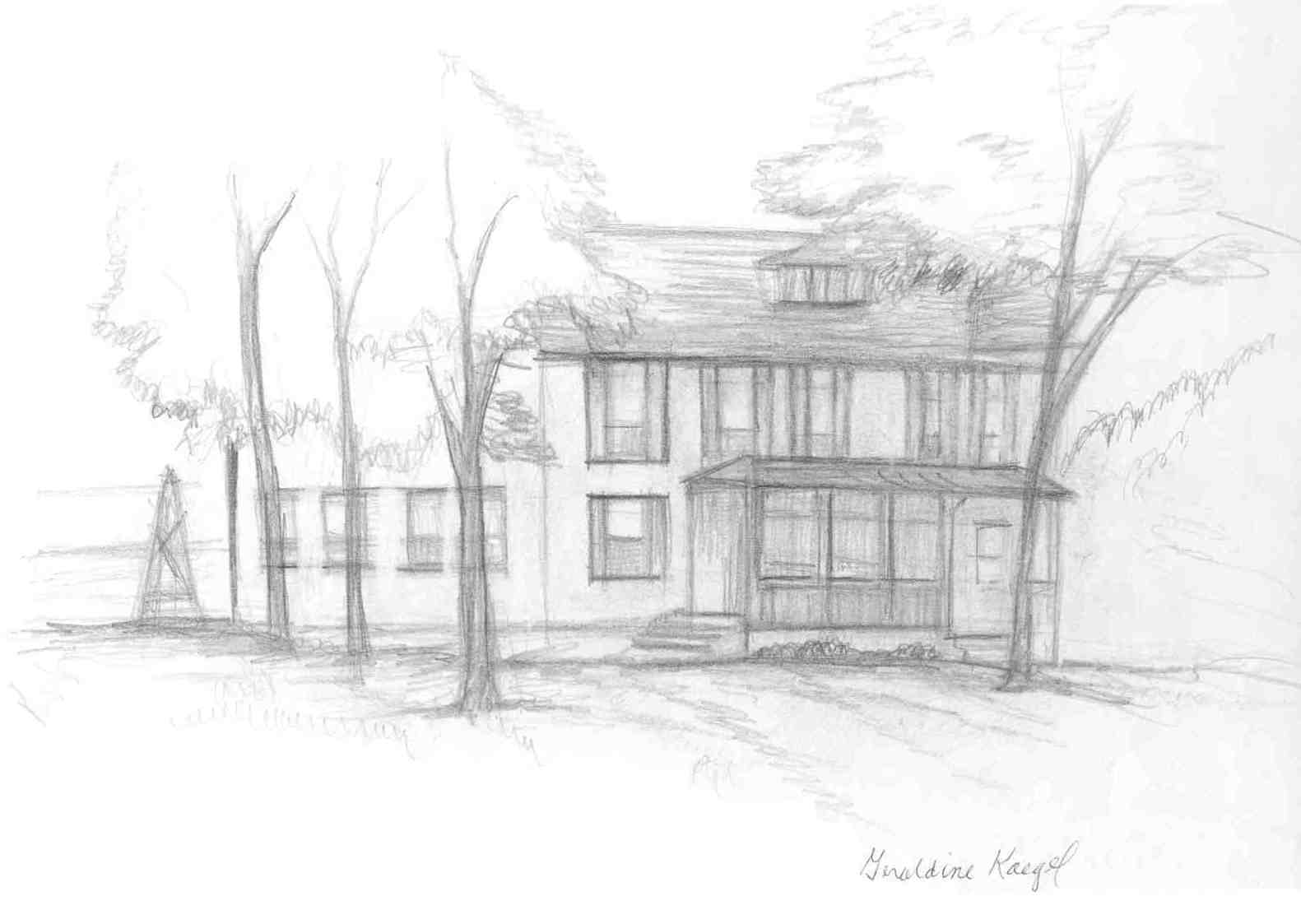

If Paul Gratiot had built his house farther north, Forest Park might look different today.
Gratiot built the house in 1832 about five blocks south of what is now the park but he had plenty of choices. His father, Charles Gratiot, had been given 5,760 acres by the king of Spain. The land covered the area bounded now by Kingshighway Boulevard on the east, Arsenal Street on the south, Big Bend Boulevard on the west and a line through Forest Park on the north.
The expanse of land came to be known as Gratiot League Square; the measurement of a league is 3 miles, and the land given to Gratiot was 1 league by 1 league or a league squared. Various members of the Gratiot family sold portions of it during the years and when the land was assembled for Forest Park, part of the Gratiots' land on which nothing had been built went for that purpose. However, the house built by Paul Gratiot remained in the family, although the land on which it was located eventually was reduced to two city lots on Victoria Avenue. The old house at 6135 Victoria was demolished in 1959, and two one-story houses were built on the two lots at 6133 and 6137 Victoria.
Charles Gratiot, who was French, moved to Lausanne, Switzerland, and then to the New World, where he lived in several places, started a fur-trading business and was involved in a series of adventures during the Revolutionary War. He was a volunteer in George Rogers Clark's regiment; on one occasion he was captured by Indians who were helping the British and was on his way to a likely hanging behind the British lines when he was rescued by Pontiac, the famous chief leading a band of Indians who were some of Gratiot's contacts in fur trading. He settled in St. Louis in 1781, became a Spanish subject to help his trading business and applied to the king of Spain for a land grant. The result was the expanse of land given to Gratiot in 1798 byDon Manuel Gayoso de Lemos, Spanish governor-general in New Orleans.
Gratiot married Victoire Chouteau, sister of Auguste Chouteau, and the couple had four sons and five daughters. The family lived in a stone house built in 1785 on the northwest corner of Main and Chestnut streets in what is now the Jefferson National Expansion Memorial. The elder Gratiot, who took part in the Louisiana Purchase ceremony two blocks from his house in 1804, died in 1817. Gratiot Street is named for him.
Three of the sons moved to northern Illinois, founded the town of Galena and opened the lead fields in that area. The land given to their father was divided among all of the children upon Charles Gratiot's death, and when Paul Gratiot returned to St. Louis from Galena, he farmed his portion of the land and built the house.
Building materials for the house included bricks made on the property by slaves, who also cut birch, ash, oak and walnut trees to provide lumber. Some of the tree trunks were left intact with their bark and used for beams. All woodwork was attached by wood pegs. The floors were ash, and the exterior was birch.
The location of Gratiot's house allowed St. Louis and St. Louis County, cooperating on the creation of Forest Park, to buy the park land, described at the time by the park's first commissioner, Andrew McKinley, as “a forest whose natural beauty has not been marred by the rude hand of the woodsman. It was indeed strange that this large tract of land should have been left in a state of nature, covered by native grasses and trees in wonderful profusion.” The park opened June 24, 1876, and the celebration was a feature of the Democratic National Convention, which a few days later in St. Louis nominated Samuel J. Tilden for president.
Paul Gratiot lived in the house he had built until he died, and his son, Paul Benjamin Gratiot, who never married, was born in the house and lived there his entire life. The younger Paul Gratiot worked for William C. Johnson & Sons Machinery Co. until about six months before his death at home March 4, 1930, at the age of 83. He was the last surviving grandchild of Charles Gratiot.
In his later years Paul Benjamin Gratiot lived in the house with his niece, Edith Gratiot. He bequeathed her control of the house and gave shares in the family business, Gratiot Square Realty and Improvement Co., to two other surviving nieces and their husbands, Bertha and James Blythe and Clara and Daniel Johnson.
Special note: From the newspaper photo above, Dogtown Historical Society member Geraldine Kaegel drew the picture below of the Gratiot home. She then donated this drawing to the DHS. It is in our archives.

After Edith Gratiot's death in 1937, the Blythes lived in the house with their two daughters until it was demolished in 1959. For the 127 years the house existed it was owned and occupied by members of one family. The two vacant lots were sold about three months after demolition, and the two one-story houses were built the following year.
| HOME | DOGTOWN |
| Bibliography | Oral history | Recorded history | Photos |
| YOUR page | External links | Walking Tour |